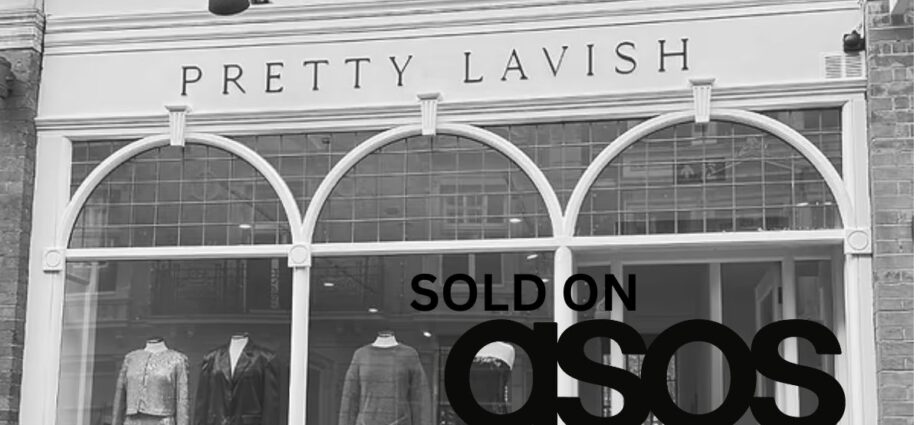The Perfect Dress (With a Side of Compromise)
I used to be a loyal ASOS shopper. Not just a casual browser, but a constant payday, ‘Asos haul’ shopper. But that changed when I began quitting fast fashion, intentionally and with no illusions. ASOS, like so many others, slipped off my radar the moment I began interrogating where my clothes came from, and who paid the price for them.
ASOS is widely recognized as a fast‑fashion retailer due to its rapid production cycle, high-volume output, and reliance on global low-wage manufacturing hubs. It sells over 850 brands plus its own-label collections, adding thousands of new items weekly. Relying heavily on overseas manufacturing, with over 80 % of its own-label garments made in low‑cost countries such as China, India, Turkey, Bangladesh, Vietnam, Sri Lanka, and Morocco. While ASOS publishes supplier country lists and commits to ethical codes, independent assessments report only moderate transparency on labour conditions, wage practices, and factory audits.
So when my cousin’s wedding fast approached, I tried hard to find an outfit that is beautiful, functional, comfortable, but most importantly, aligned with the ethics I’ve been slowly weaving into my wardrobe.
My hair is in braids right now, so nothing that requires an updo or statement neckline that competes with the crown I already wear. I searched endlessly. Rentals seemed like a good idea in theory, but the logistics felt clunky, trying before renting wasn’t an option, and I couldn’t find anything that made me feel like me. I found that Selfridges and ……. allow you to come into the store and try on the rentals, but with both stores being in London, it couldn’t fit into the little time I had left before the wedding.
I circled back to my new favourite, Disturbia, and found a green satin slip, good, but a little too simple.

I drifted through Nobody’s Child and Never Fully Dressed; both had potential. Club L London had stunning silhouettes, but most were fitted, and my body’s not in a fitted mood right now. Nobody’s Child was pushing my price ceiling, and though I know that sustainable clothing costs more for a reason, old mindsets don’t always fade easily.



Then Pretty Lavish entered the chat. Their sustainability efforts stood out, and the silver lace-inset slip dress I found? Chef’s kiss. Sleek, not clingy. Subtle edge. I was nearly sold. But silver—too close to white? I figured I’d pair it with black accessories to distance it from bridal territory and clicked “buy.” Then came the kicker: student discount revoked at checkout because of my postcode. What was £79 became £90 with delivery. Irritated but not defeated, I searched for the same dress second-hand.

And there it was! Not Second Hand, BUT, on ASOS. In a gold-brown-tan hue, even better than silver. Warmer, more wedding-appropriate, and frankly, more me. It was on sale too. £70. Perfect.
But ASOS!
Can a Dress Be Sustainable If the Platform Isn’t?
Let’s talk about this knot in my stomach the tug-of-war between ethical intentions and the convenience of a fast fashion giant masquerading as a sustainable option.
ASOS has a sustainability initiative called Fashion with Integrity. A neat title, but it sounds more like corporate theatre than a radical shift. The brand claims a four-pillar strategy: respecting people, reducing waste, fighting climate change, and promoting animal welfare. According to their latest strategy update, ASOS aims to reach net zero by 2030, switch all own-brand products to more sustainable materials by 2025, and improve supply chain transparency.
Sounds decent, right?
But a closer read tells another story. The language is hazy, peppered with aspirations and targets, but light on measurable change. “Sustainable materials” aren’t clearly defined. Their worker well-being section mentions audits and grievance mechanisms, yet stops short of discussing living wages or concrete improvements in factory conditions. It’s a strategy heavy on optics, light on accountability.
And then there’s the issue of scale. ASOS churns out thousands of new items each week. Even if every one of them were stitched from recycled ocean plastic and blessed by a carbon-neutral angel, the model remains the same: overproduction, overconsumption, overstimulation.
Their so-called Responsible Edit was quietly pulled after the UK’s Competition and Markets Authority began investigating ASOS for greenwashing. When a “sustainable” collection can’t withstand scrutiny, it’s worth asking: are these promises designed to clean up the brand—or just its image?
“The dress might be ethical, but the system selling it isn’t.”
This is the core tension. Pretty Lavish may be doing things right. But when their garments are sold on a platform that thrives on speed, volume, and low margins, it dilutes the impact. It’s like putting a plant-based burger on a menu at a chain that still exploits workers and sources meat unsustainably. It’s progress, but wrapped in a contradiction.
I still don’t know what the right call is.
But I know that perfect starts to feel complicated when integrity is stitched into the fabric of your choices.
I decided not to buy the dress; something about it seemed like a step backwards for me personally. The more I looked at the dress, the more I fell out of love with it. And found myself back at square one with weeks to go. So I decided to make one!… Stay tuned to see my wedding guest outfit made by MOI!

